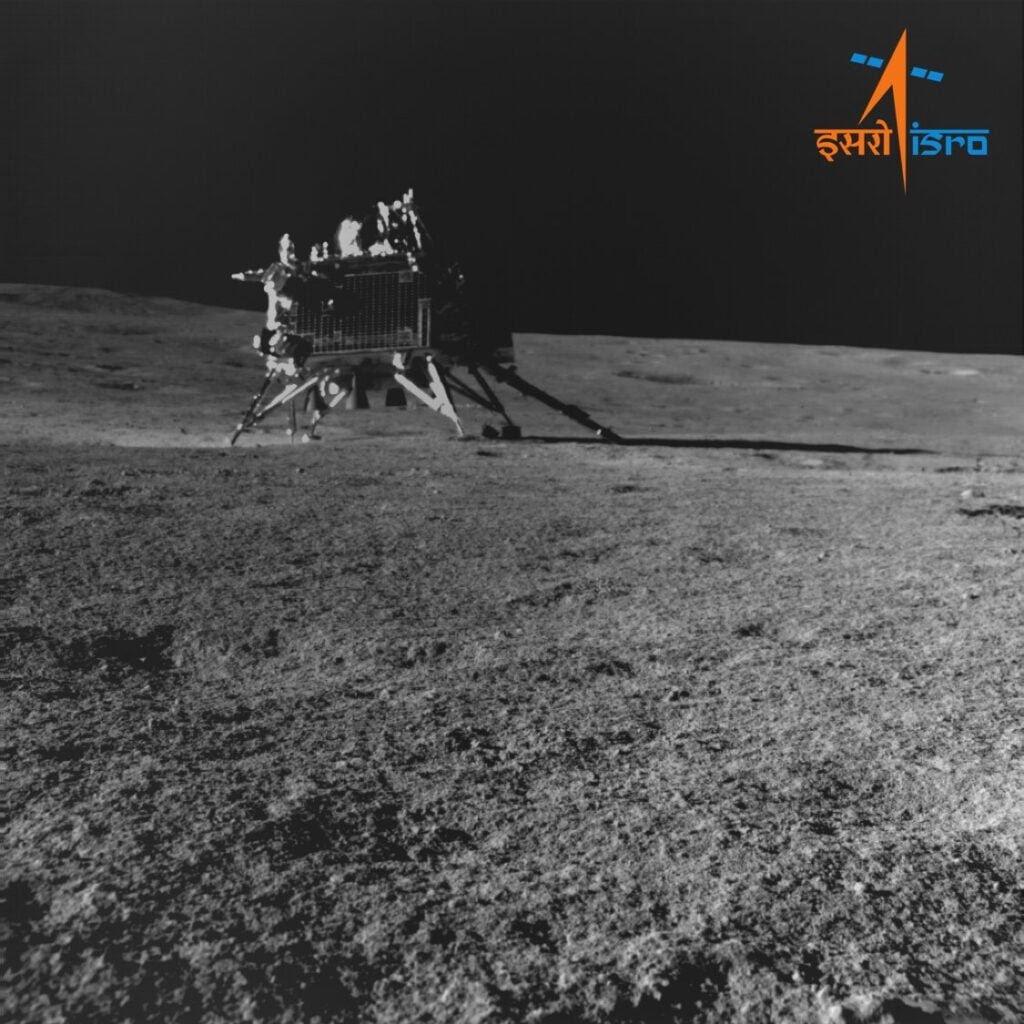The Pragyan rover’s mission has produced some amazing advancements, which the Indian space agency has disclosed.

The Pragyan rover took a picture of the Vikram lander. Photo credit: ISRO

The Pragyan rover took a picture of the Vikram lander. Photo credit: ISRO
An important update was provided by the Indian Space Research Organisation (ISRO), which revealed on Wednesday that the Pragyan rover had successfully traveled 15 meters and had snapped a photo of the Vikram lander.
ISRO has made available a number of photographs taken by the Pragyan rover that show different aspects of the lunar surface.
ISRO shared the message “Pushing Boundaries, Exploring the Terrain of the Moon: India’s grandeur has no limits! Once more, Pragyan’s friend captures Vikram in its stare! Around 11 IST today, this famous photo was taken from a distance of about 15 meters.
The designated landing spot, which is 4 km x 2.4 km and located at 69.367621 S, 32.348126 E, is very near to Chandrayaan 3’s present coordinates of 69.373 S, 32.319 E, according to the ISRO.
The Chandra’s Surface Thermo-physical Experiment (ChaSTE) probe and the Instrument for Lunar Seismic Activity (ILSA) probe were both prominently shown in the ISRO image of the Vikram lander.
Two navigation cameras, which are essential to the Pragyan rover’s design, are located at the front of the vehicle. At Ahmedabad’s prestigious Space Applications Centre, ISRO carefully processes the data collected by these cameras.
The rover’s data collecting and experimental missions have the potential to answer questions about the moon’s composition, such as whether oxygen and hydrogen are present.
The Chandrayaan-3 rover plans to undertake a variety of tests over the course of 14 days. According to ISRO, this includes a thorough examination of the mineral compositions strewn throughout the lunar surface. This was announced shortly after Chandrayaan-3’s successful moon landing.
On August 25, ISRO said, “The rover has successfully traveled a span of approximately 8 meters (26.2 feet).”
In a statement released on Tuesday, ISRO verified that the rover’s search for probable signs of frozen water had been successful in identifying sulfur and detecting a variety of other elements close to the lunar south pole.
According to a statement on the ISRO website, the rover used its laser-induced spectroscope equipment to detect the presence of aluminum, iron, calcium, chromium, titanium, manganese, oxygen, and silicon on the lunar surface.
The Pragyan rover is prepared to dive into a thorough investigation of the moon’s atmospheric conditions as well as seismic disturbances that may cause ripples in its surface in the forthcoming phases.














